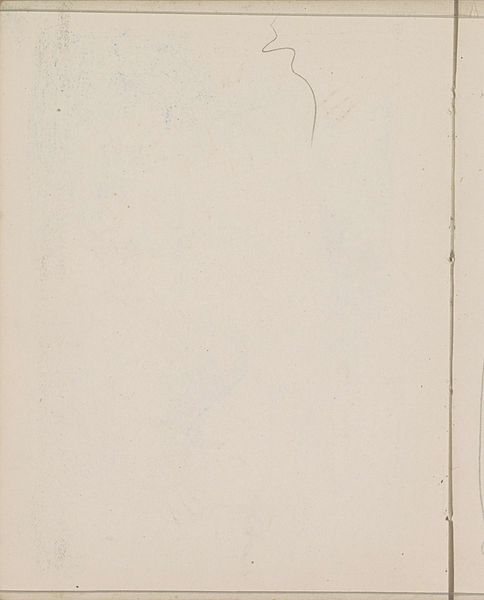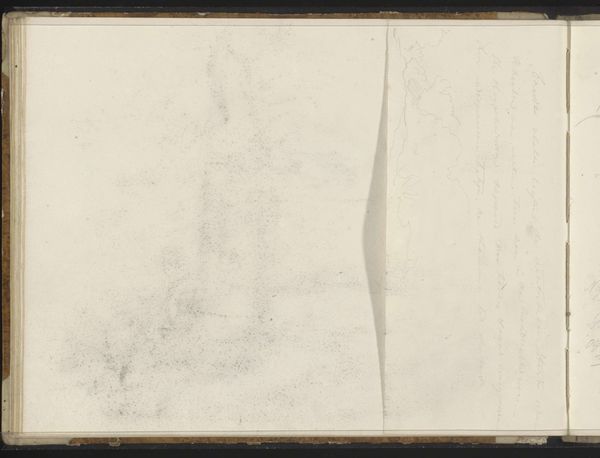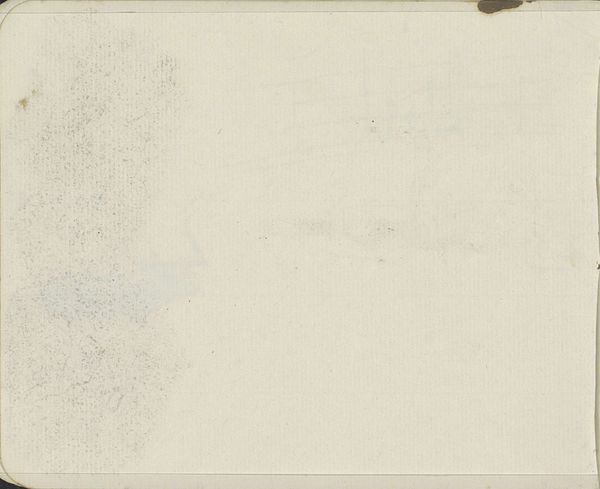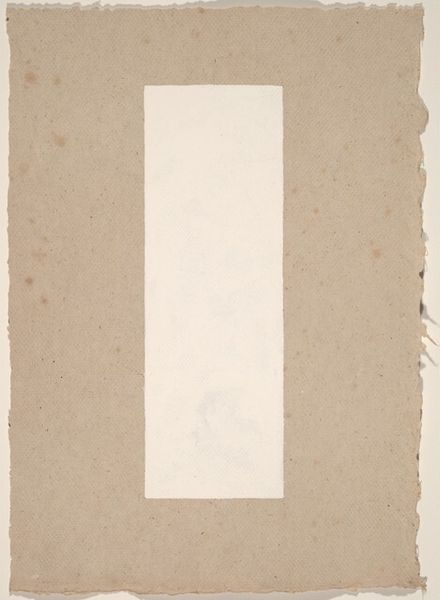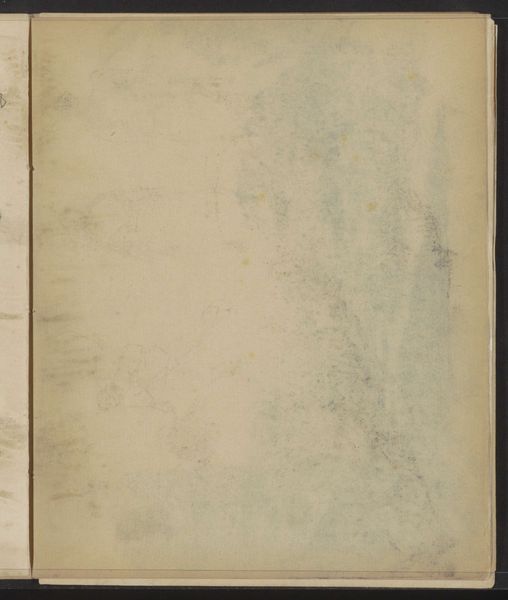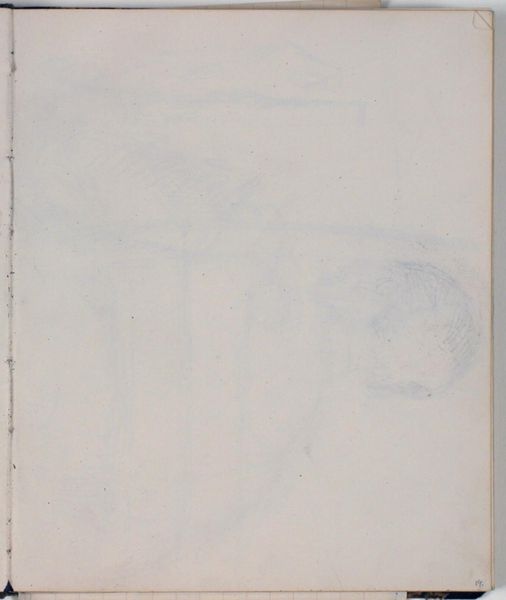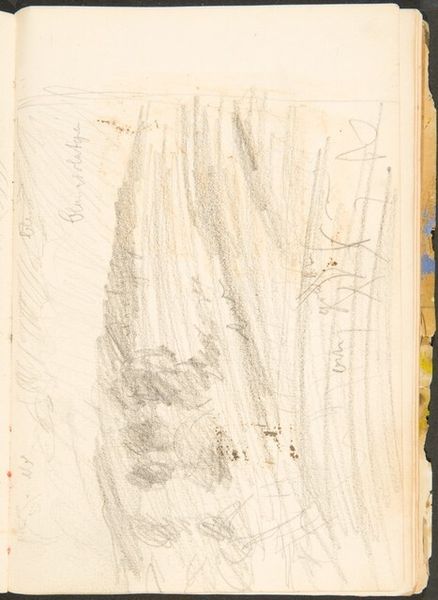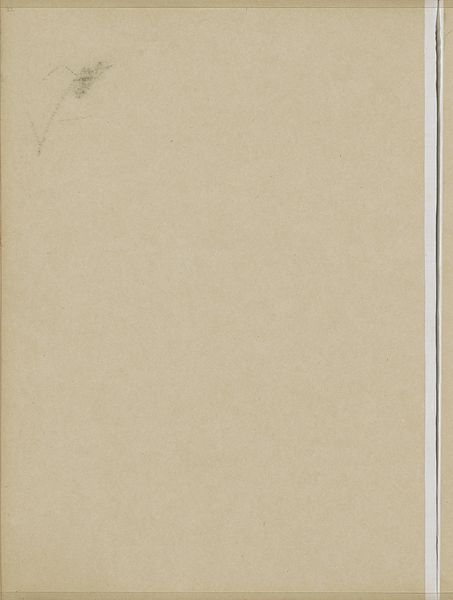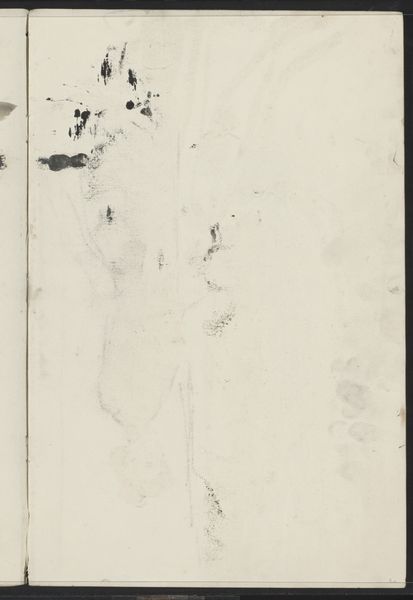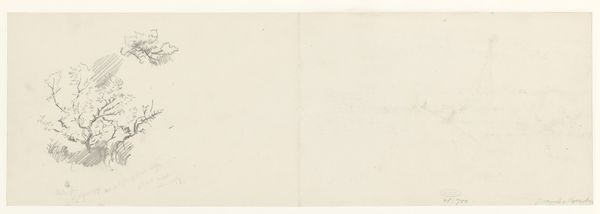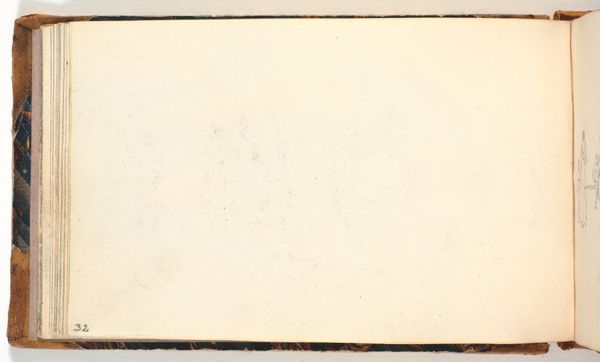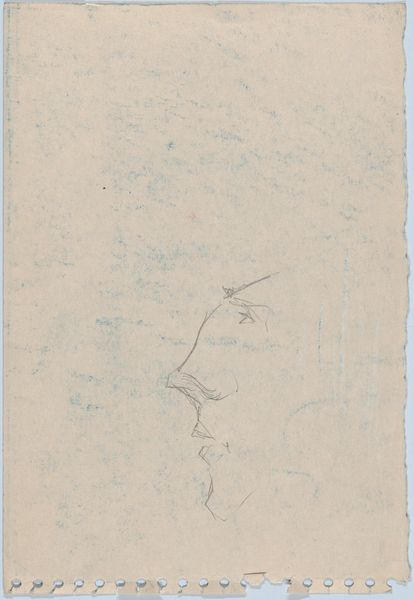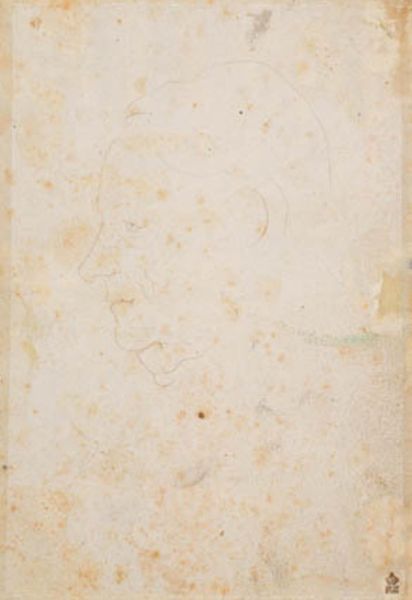
Copyright: Rijks Museum: Open Domain
Editor: Here we have "Annotatie" by George Hendrik Breitner, likely made between 1886 and 1898, it is crafted with graphite and pencil on paper. The blankness is intriguing. What do you make of this nearly empty page? Curator: I am struck by the evidence of process. Graphite and pencil, common materials, humble even. Notice how the materiality of the paper itself takes center stage. Breitner, perhaps challenging the preciousness often associated with "high art" by presenting what is ostensibly a working page. This focus elevates the means of production. It allows the materiality of making art become as significant as the finished artwork, questioning conventional boundaries between sketch and art work. Editor: So it's about... challenging the status of a sketch? Curator: In part, yes. I would be curious to learn more about Breitner's access to paper, graphite and pencils. Was this a readily available, inexpensive supply, and did the social context of the time permit any common person the freedom of drawing as well. We have a landscape painter who also portrays women and street views; does this plain medium act in direct opposition of those traditional subjects by providing an entry way for other subjects, concepts and materials? Editor: Interesting... Almost like the absence *is* the point. We have these subtle clues that point toward accessibility in process, and the simplicity with it seems to broaden artistic entry for everyday subjects and materials. Curator: Exactly. That shifts the power dynamic, doesn’t it? We have these basic media here—paper, graphite, pencil—these are objects involved with not only artistic rendering, but writing as well. Could we make a claim about visual ‘annotation’ as part of everyday life or recording of everyday occurrences through simple writing instruments. We see how consumption shifts value and is challenged to do so by artist intent. Editor: I hadn't thought about that, that material aspect shifts how you view his choices, how that changes access. Curator: Precisely, and with every stroke, he invites us to reflect not just on *what* is depicted, but *how* and with *what* it's made, who has access, and under what conditions. Editor: This has broadened my perspective. I was initially stumped, but now it all clicks! Curator: The beauty is often in deconstructing these layers.
Comments
No comments
Be the first to comment and join the conversation on the ultimate creative platform.
